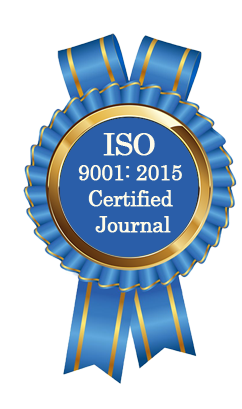| All | Since 2020 | |
| Citation | 105 | 60 |
| h-index | 4 | 4 |
| i10-index | 3 | 2 |
WJAHR Citation 
Login
News & Updation
Best Article Awards
World Journal of Advance Healthcare Research (WJAHR) is giving Best Article Award in every Issue for Best Article and Issue Certificate of Appreciation to the Authors to promote research activity of scholar.
Best Article of current issue
Download Article : Click here
Indexing
Abstract
HUM DO HAMARE DO (WE TWO OUR’S TWO): THE MAIN THEME OF 21ST CENTURY
*Kushal Nandi, Saroni Saha, Dr. Dhrubo Jyoti Sen and Dr. Dhananjoy Saha
ABSTRACT
Birth control, also known as contraception, anticonception, and fertility control, is a method or device used to prevent pregnancy. Birth control has been used since ancient times, but effective and safe methods of birth control only became available in the 20th century. Planning, making available, and using birth control is called family planning. Some cultures limit or discourage access to birth control because they consider it to be morally, religiously, or politically undesirable. The World Health Organization and United States Centers for Disease Control and Prevention provide guidance on the safety of birth control methods among women with specific medical conditions. The most effective methods of birth control are sterilization by means of vasectomy in males and tubal ligation in females, intrauterine devices (IUDs), and implantable birth control. This is followed by a number of hormone-based methods including oral pills, patches, vaginal rings, and injections. Less effective methods include physical barriers such as condoms, diaphragms and birth control sponges and fertility awareness methods. The least effective methods are spermicides and withdrawal by the male before ejaculation. Sterilization, while highly effective, is not usually reversible; all other methods are reversible, most immediately upon stopping them. Safe sex practices, such as with the use of male or female condoms, can also help prevent sexually transmitted infections. Other methods of birth control do not protect against sexually transmitted diseases. Emergency birth control can prevent pregnancy if taken within 72 to 120 hours after unprotected sex. Some argue not having sex is also a form of birth control, but abstinence-only sex education may increase teenage pregnancies if offered without birth control education, due to non-compliance. In teenagers, pregnancies are at greater risk of poor outcomes. Comprehensive sex education and access to birth control decreases the rate of unwanted pregnancies in this age group. While all forms of birth control can generally be used by young people, long-acting reversible birth control such as implants, IUDs, or vaginal rings are more successful in reducing rates of teenage pregnancy. After the delivery of a child, a woman who is not exclusively breastfeeding may become pregnant again after as few as four to six weeks. Some methods of birth control can be started immediately following the birth, while others require a delay of up to six months. In women who are breastfeeding, progestin-only methods are preferred over combined oral birth control pills. In women who have reached menopause, it is recommended that birth control be continued for one year after the last period. About 222 million women who want to avoid pregnancy in developing countries are not using a modern birth control method. Birth control use in developing countries has decreased the number of deaths during or around the time of pregnancy by 40% (about 270,000 deaths prevented in 2008) and could prevent 70% if the full demand for birth control were met. By lengthening the time between pregnancies, birth control can improve adult women's delivery outcomes and the survival of their children. In the developing world, women's earnings, assets, and weight, as well as their children's schooling and health, all improve with greater access to birth control. Birth control increases economic growth because of fewer dependent children, more women participating in the workforce, and less use of scarce resources.
[Full Text Article] [Download Certificate]
